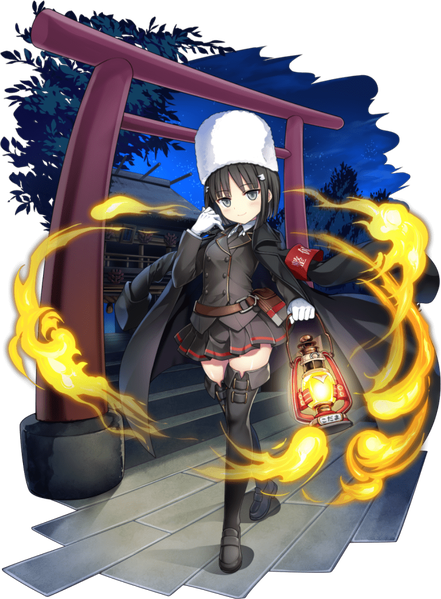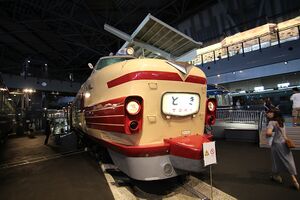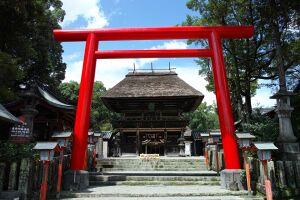
Niiroku
| Niiroku | |||||
|---|---|---|---|---|---|
| Japanese Name | ニイロク | ||||
| Weapon | |||||
| Race | Raillord | ||||
| Nationality | |||||
| Birthday | February 6 | ||||
| Constellation | Aquarius | ||||
| Talents | Throwing empty cans | ||||
| Likes | Kiyoharu, Bandages | ||||
| Dislikes | Labor disputes | ||||
| Strengths | Very high performance as she is the state-of-the-art machine | ||||
| Weaknesses | Unable to change her facial expression due to a major breakdown | ||||
| Hobbies | Sweeping the precincts | ||||
I am Niiroku, the designated Raillord for the KuHa 26 train. I collaborate with my engineer, Kiyoharu Akai, he used to run tests every day. However, the Imperial Railways was dismantled and the plan was buried in the darkness. All that remains is this small driver module. And yet, I'm still here.
Layers
| Icon | Title | Release Date | Where to Obtain |
|---|---|---|---|
| [The Cool Newcomer] Niiroku | 2022 June 24 | [Maitetsu Collaboration!] Login Bonus | |
| [Cutting-Edge Raillord From Eisengrad⁉] Niiroku | 2022 June 24 | [Laid-Back Sweetheart and the Cool Smiler] Collab Gacha |
Skills
Trivia
- Niiroku is a character from Maitetsu (まいてつ).
- Kiyoharu Akai is Niiroku's collaborating engineer. Head priest of a local shrine. Is often speculated to have had some experience in the operation of railroads.
- Niiroku is unable to make major facial expressions changes - her facial AI has malfunctioned. Even in the original visual novel, she covered her face with a bandages on she first appearance, and finally showed her true face after Olivi's persuasion.
- The building in the background of [Cutting-Edge Raillord] is the Akai Aso Shrine (赤井阿蘇神社), based on the Aoi Aso Shrine (青井阿蘇神社) in Hitoyoshi.
- The Maitetsu girls Hachiroku, Olivi, Niiroku, Reina, and Hiyoko ties for the first characters in Mist Train Girls to have a Train Board upgrade that replaces their Special Skill.
Counterpart
The 181 series and the similar 151 and 161 series, originally classified as the 20 series, are Japanese Limited Express electric multiple units. Built from 1958 to 1966 for the JNR, the 181 series sets were used around the eastern and central parts of Japan until their retirement in 1982.
The 151 series sets, the effective predecessor of the 181 series sets, were originally produced in 1958 to be used on the new Kodama services; three eight-car sets were produced and were stationed at Tamachi Depot (now inactive). When originally introduced, the 151 series sets were known as the 20 series sets, but were reclassified as the 151 series sets on 1 June 1959. More 151 series cars were produced after the reclassification until around December 1959.
Two cars survive today, both of which are 181 series cars; KuHa 181-1 is preserved at Kawasaki Heavy Industries' Kobe Factory and KuHa 181-45 is preserved at the Railway Museum in Saitama, Japan. KuHa 181-1 has since been restored to its original designation as KuHa 26001. A full-scale mockup of a sectioned front end of a KuHa 151 series car is located at the Kyoto Railway Museum. Locomotive Wiki
Aoi Aso Shrine (青井阿蘇神社) is a Shinto shrine in Hitoyoshi, Kumamoto Prefecture, Japan. It is colloquially known as Aoi-san (青井さん). It was originally established as a prefectural shrine, but is currently designated as a national shrine (別表神社). Five of the structures within the shrine are listed as National Treasures of Japan.
The shrine enshrines Takeiwatatsu-no-Mikoto, his consort Asotsuhime-no-Mikoto, and their son Hayamikatama-no-Mikoto. These three deities are three of the 12 deities enshrined at Aso Shrine in Aso City, Kumamoto Prefecture, where it is locally known as Aso Sanja. Until the early modern period, Shintoism and Buddhism were practiced based on the Shinto aspects of both parts, with the god Takeiwatatsu-no-Mikoto enshrining the Eleven-Headed Kannon, the god Asutsuhime-no-Mikoto enshrining Fudo Myo-o, and the god Kunizo Hayamikatama enshrining Bishamonten as the main Buddha. However, in 1665, the shrine was converted to be a completely Shinto shrine.
In August 1872, the shrine was listed as a township level shrine. In November 1935, it was promoted to a prefectural level shrine. The shrine is located in the floodplain of the Kuma River and has historically suffered floods. In 1965, the Kuma River was flooded to a depth of 2.1 meters (6.9 feet), and in 1971 to a depth of 1.1 meters (3.6 feet). During the 2020 Kyushu floods, the flooded area reached a depth of 4.3 meters (14 feet). The shrine itself during the incident was flooded above the ground floor and the parapets Misogi Bridge were damaged by the floodwater. Wikipedia
Gallery
- Pages using Tabber parser tag
- Pages using DynamicPageList3 parser tag
- Weapon Artifact
- Raillord
- Others
- Aquarius
- Element Cut
- Element Dark
- Element Light
- Maitetsu








